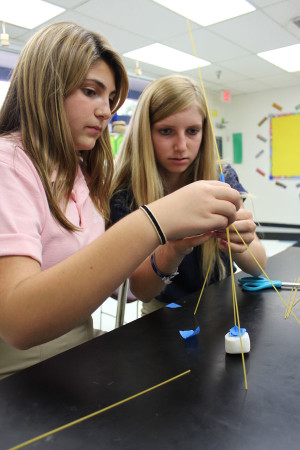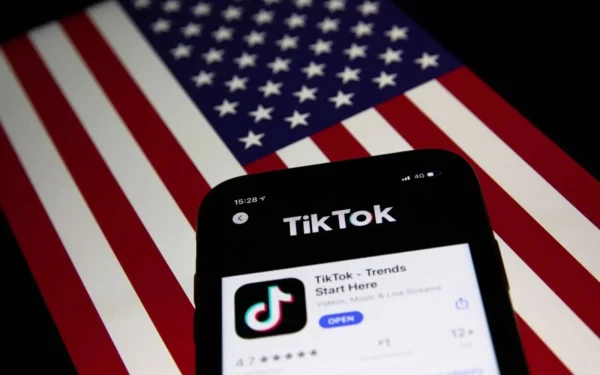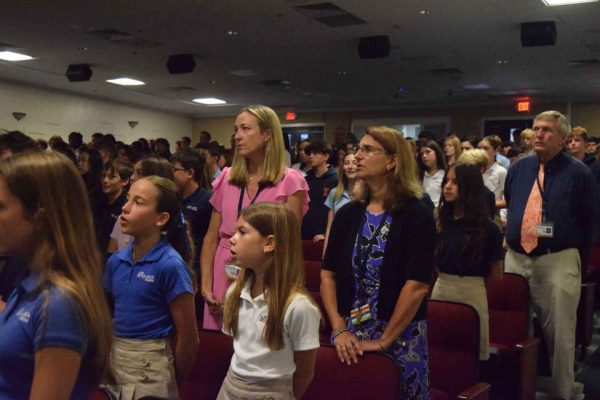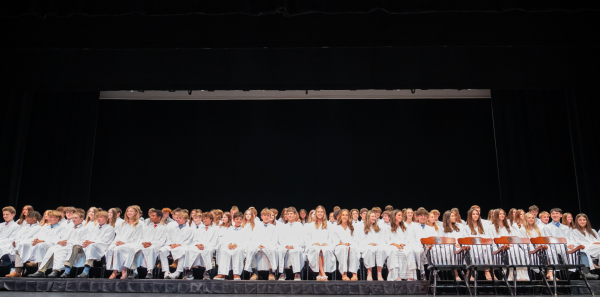The Science of Spaghetti and Marshamallows
Eighth grader Joey Berg (left) carefully lights the sparkler of classmate James Richardson outside the Buc Café on August 18, 2015.
Summer vacation is the time for having fun, relaxing, and sleeping late. So every year when the first week of school rolls around, it can be difficult to get back into the academic routine. But thankfully, even teachers understand the sudden shock of going from summer vacation to the rigors of school. So as the new day unfolds, almost all classes are spent easing into the new year. However, this is not the case for the eighth-grade science classes taught by Science Department Chair Ms. Gabriele St. Martin. On the first day of school, her SEA (Scientific Experimentation and Analysis) and SEAT (Science, Engineering, Analysis and Technology) students jumped right into the curriculum with two exciting experiments.
The first one involved lighting sparklers and making observations. The second experiment, however, was a bit more

Eighth graders Sophie Rabiei (left) and Regan Kretz concentrate on making their tower of spaghetti as tall as possible.
challenging. “We had to see who could build the tallest free standing building out of [uncooked] spaghetti, a marshmallow, and some tape,” explained eighth grader Leslie Berg. It was definitely not the ordinary “read the syllabus and go over expectations” first day of class.
“[One] reason I begin with activities [on the first day of school] is that I want the students to be excited by science!” said St. Martin.
However, although the experiments were fun and exciting, they were also purposeful.
“The Spaghetti and marshmallow engineering project gets students excited about working in a team and lets them use problem-solving thinking,” said St Martin.“The activities relate to the content of the [SEAT] course. The sparklers are an example of talking about matter, the focus of the SEAT class for the first three quarters of the school year,” continued St. Martin.
These experiments also give students a taste of what’s to come in the advanced SEAT class. “Highlights in SEAT include using chemicals and acids, and being able to use alcohol burners,” St. Martin revealed. It’s experiments and activities such as these that inspire students because they are allowed to experiment and explore, just like real scientists.
St. Martin also provided a preview of what SEAT students can expect throughout the year.
“The fourth quarter is all engineering,” she said. “Students can look forward to building an egg drop device using nothing but toothpicks and glue, and [they can look forward] to building a Rube Goldberg device.”
However, it’s not just the SEAT class that gets to have fun.
“Highlights in SEA include the introduction of science interactive notebooks which allow students to use different methods to prove to me they understand the subject matter,” said St. Martin.
And while good portions of the year will include lots of work and studying, there are many interactive activities planned as well.
“Students will be participating in an obstacle course to better understand speed and acceleration,” commented St. Martin. “[Students] will be building a balloon car to understand Newton’s laws,” she added. “Students should be prepared to learn a lot, work hard, and have fun!”
Although the science curriculum will be arduous, based on the experiments conducted on the first day of school, it will also involve a lot of fun, hands-on activities, too. After all, what other class lets students play with sparklers, marshmallows, and spaghetti?





